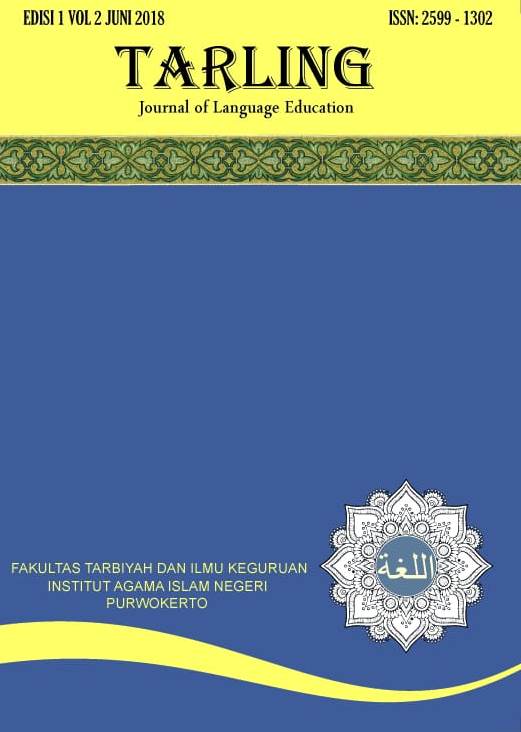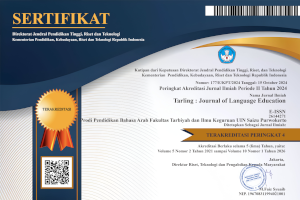Camtasia Studio: Software Multimedia dalam Pembelajaran Menyimak Arab di Era Industri 4.0
DOI:
https://doi.org/10.24090/tarling.v5i1.4581Keywords:
Arabic listening, multimedia software, camtasia studioAbstract
A teacher is the spearhead of education, he must be able to revolutionize the teaching process properly, namely by changing the curriculum, strategies, materials, evaluation, and learning media that are in accordance with the demands of the 4.0 industrial revolution. This is the responsibility of all teachers, including Arabic teachers in Arabic listening skills in ST class. 12, Special Program for Arabic Language Development at State Islamic University of Maulana Malik Ibrahim Malang which uses Camtasia studio software in Arabic listening learning. The method of this research is descriptive qualitative. This media is useful for students in the form of increasing their learning motivation, changing behavior, providing new motivation and refreshment, providing meaningful lessons, expanding experiences and insights, and achieving the learning objectives of Arabic listening, as well as preparing them to face the era of the industrial revolution 4.0. The result of this research is that learning Arabic listening with Camtasia studio software media has three stages, namely the preliminary stage, which includes orientation, apperception, motivation, giving references, second: the core stage of learning, which includes observing, exploring, associating, communicating, and third: the closing stage, which includes conclusions, reflection and evaluation, motivation, and also prayers and greatings.Downloads
Published
2021-07-19
Issue
Section
Articles
License
Authors who publish with this journal agree to the following terms:
- Authors retain copyright and grant the journal right of first publication with the work simultaneously licensed under a Creative Commons Attribution License that allows others to share the work with an acknowledgement of the work's authorship and initial publication in this journal.
- Authors are able to enter into separate, additional contractual arrangements for the non-exclusive distribution of the journal's published version of the work (e.g., post it to an institutional repository or publish it in a book), with an acknowledgement of its initial publication in this journal.
- Authors are permitted and encouraged to post their work online (e.g., in institutional repositories or on their website) prior to and during the submission process, as it can lead to productive exchanges, as well as earlier and greater citation of published work (See The Effect of Open Access).










